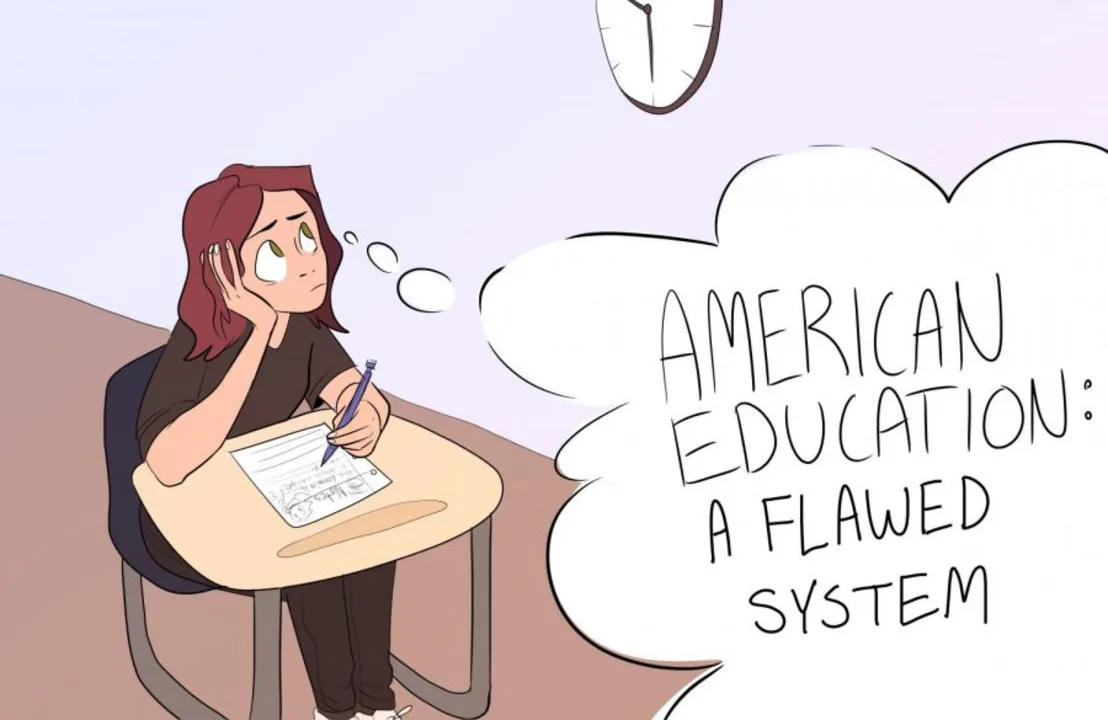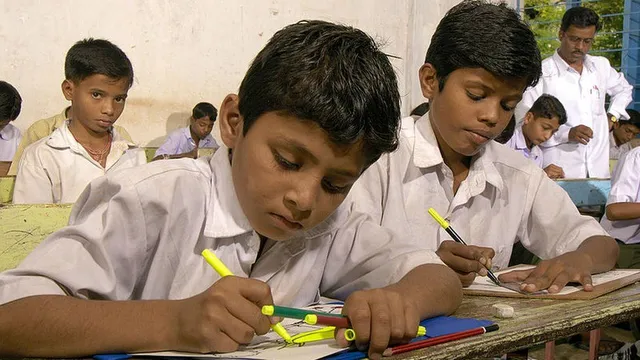Exploring the Causes of Inadequate Access to Quality Education
The quality of education is an essential factor in the development of any society. Unfortunately, many countries struggle to provide quality education to all citizens, leading to inequity and underdevelopment. There are various causes of inadequate access to quality education, ranging from economic to social and political factors. This article seeks to explore the causes of inadequate access to quality education.
Economic Factors
Economic factors are some of the most important contributors to inadequate access to quality education. Poverty is the most significant economic factor, as the poor are unable to afford the cost of quality education. This is especially true in developing countries, where poverty is widespread and quality education is expensive. In addition, in many countries, the cost of education is rising due to inflation, making quality education even less affordable. Furthermore, many countries are unable to provide quality education due to limited economic resources. This is due to a lack of investment in education, leading to a lack of resources and infrastructure.
Social Factors
Social factors are also an important contributor to inadequate access to quality education. Discrimination is one of the most significant social factors, as many people are excluded from educational opportunities due to their gender, race, or social class. This is especially true in countries with entrenched social hierarchies, where certain groups are placed at a disadvantage. In addition, inadequate access to quality education is often a result of cultural norms and beliefs. In some cultures, education is not seen as a priority, leading to a lack of resources and investment in the education sector.
Political Factors
Political factors are also an important contributor to inadequate access to quality education. In many countries, the education system is controlled by the government. This can lead to inefficiency and mismanagement, resulting in inadequate access to quality education. Furthermore, many governments are unwilling to invest in education, due to a lack of political will or an aversion to change. This can lead to a lack of resources and infrastructure, resulting in inadequate access to quality education.
Conclusion
Examining the Impact of Funding Flaws on Education Systems
Education is a fundamental part of any society, and there are many factors that influence its success. One important factor is the funding of education systems, which often suffer from flaws. These flaws can have a significant impact on the quality of education provided and can even lead to a decrease in overall student achievement. This article will examine the impact of funding flaws on education systems.
The Problem of Unsustainable Funding
One of the primary issues with funding for education systems is that it is often unsustainable. This means that the money available for educational programs and resources may not be enough to cover the costs associated with running the system. This can lead to a lack of resources, which can adversely affect the quality of educational programs. Additionally, when funding is insufficient, it can lead to a decrease in the number of teachers or other personnel needed to provide a quality educational experience.
The Impact of Unsustainable Funding
When education systems suffer from insufficient funding, the impact can be far-reaching. For example, students may not have access to the necessary resources to succeed. This can lead to lower test scores and even a decrease in college acceptance rates. Additionally, when funding is not sufficient, schools may not be able to provide the necessary technology or equipment to ensure a quality educational experience. This can prevent students from gaining the skills they need to be successful in the future.
The Need for Sustainable Funding
Given the impact of inadequate funding on education systems, it is essential that funding be provided in a sustainable manner. This means that there must be adequate resources available to ensure that students have access to the educational programs and resources they need to succeed. Additionally, funding must be provided on a long-term basis so that educational programs can be maintained and improved over time. This will ensure that students have access to the best possible educational experience.
Conclusion
In conclusion, funding flaws can have a significant impact on education systems. Without adequate resources, students may not receive the quality of education they need to succeed. It is therefore essential that funding for education systems be provided in a sustainable manner to ensure that students have access to the resources they need to reach their educational goals.
Uncovering the Effects of Overcrowded Classrooms on Student Learning
Classrooms overflowing with students can have a major impact on a student’s educational experience. An overcrowded classroom can create an environment that is not conducive to learning. As a result, student achievement and educational outcomes can be affected. So what are the effects of overcrowded classrooms on student learning?
Competition for Attention
In an overcrowded classroom, teachers can struggle to give each student the attention they need. There are only so many hours in a day and with a large number of students, it can be difficult to meet the needs of each individual student. Students who need extra help or support may not get the attention they need, and this can have a negative impact on their learning.
Lack of Classroom Materials
In an overcrowded classroom, there are usually not enough materials to go around. This can lead to students not having access to the material necessary to complete their assignments. In addition, there may not be enough textbooks to go around, which can also impact student learning. Without the necessary materials, it can be difficult for students to gain a full understanding of the material being taught.
Reduced Student Engagement
When classrooms become overcrowded, it can be difficult for students to remain engaged in the lesson. With so many students in the room, it can be hard for teachers to keep everyone’s attention. In addition, students may become frustrated when they are not able to get the help they need or when they are not able to access the materials they need. This can lead to reduced student engagement, which can have a negative impact on student learning.
Lack of Individualization
In an overcrowded classroom, it can be difficult for teachers to individualize their instruction. When there are too many students in the classroom, it can be hard to tailor the lesson to the individual needs of each student. This can lead to students not getting the help they need and can lead to reduced student achievement.
Increased Stress
In an overcrowded classroom, students can feel overwhelmed and stressed. This can lead to students feeling anxious about their coursework and can lead to lower grades. In addition, students may feel like they are competing for the teacher’s attention and this can lead to increased stress and anxiety.
Conclusion
Overcrowded classrooms can have a major impact on student learning. From competition for attention to reduced student engagement, overcrowded classrooms can lead to lower student achievement and educational outcomes. It is important for educators and administrators to be aware of the effects of overcrowded classrooms and to work to ensure that all students have access to a quality education.
Investigating the Impact of Low Teacher Salaries on Education Quality
Low teacher salaries are often a primary symptom of a flawed education system. Low wages for teachers, combined with large class sizes, can have an adverse effect on the quality of education that students receive.
One of the most significant impacts of low teacher salaries is that it can lead to a decrease in teacher retention. When teachers are not paid well, they are more likely to leave their positions and seek employment elsewhere. This lack of continuity can lead to decreased effectiveness in the classroom, as teachers are less likely to be able to develop strong relationships with their students and build an effective learning environment.
Low salaries also have a direct impact on teacher morale. When teachers feel undervalued, and their salaries are not sufficient to cover their basic living costs, it can lead to frustration and a feeling of worthlessness. This can lead to a decrease in teacher engagement, with teachers feeling demoralized and disinterested in their job. This can again have a negative impact on student learning, as teachers are less likely to be able to engage with their students and inspire them to reach their full potential.
Low teacher salaries can also have an impact on the quality of teachers who are attracted to the job. When salaries are not competitive, talented and experienced teachers may shy away from the profession. This can lead to a decrease in the overall quality of teachers in the system, as schools may struggle to attract the best candidates.
Finally, low teacher salaries can have an impact on the way that teachers are perceived by the wider community. When teachers are underpaid, it can lead to a devaluing of the profession and a lack of respect from the public. This can lead to a decrease in the status of the profession, as people are less likely to recognize the importance of teachers in society.
Overall, it is clear that low teacher salaries can have a significant impact on the quality of education that students receive. Low wages can lead to decreased teacher retention, decreased morale, decreased quality of teachers, and a decrease in the status of the profession. This therefore highlights the importance of ensuring that teacher salaries are competitive and that the education system is adequately funded.
Analyzing the Impact of Outdated Curriculum on Student Outcomes
The education system is a vital part of any society, but it is not something that can remain stagnant. Over time, the curriculum needs to be updated in order to keep up with the changing needs of students and the world. An outdated curriculum can have a major impact on student outcomes, making it essential for schools to stay up-to-date.
One of the most obvious impacts of an outdated curriculum is that it can limit the knowledge and skills students have access to. If the curriculum isn’t kept up-to-date with current trends, students won’t have the skills they need to succeed in the modern world. This can have a major impact on their employment prospects and future opportunities.
Another major flaw in outdated curriculums is that they can be incredibly outdated, often emphasizing long-outdated models and concepts. This can lead to students having an incomplete or inaccurate understanding of the topic, and can leave them unprepared for the challenges of the modern world.
A final impact of an outdated curriculum is that students may not be exposed to a variety of viewpoints. The curriculum may only be focused on one specific perspective, and students may not be exposed to other important ideas or concepts which could provide them with a more holistic understanding of the topic.
Overall, it’s clear that outdated curriculums can have a major impact on student outcomes. Schools need to ensure that they are regularly updating their curriculums in order to ensure that students have the knowledge and skills to succeed in the modern world.










